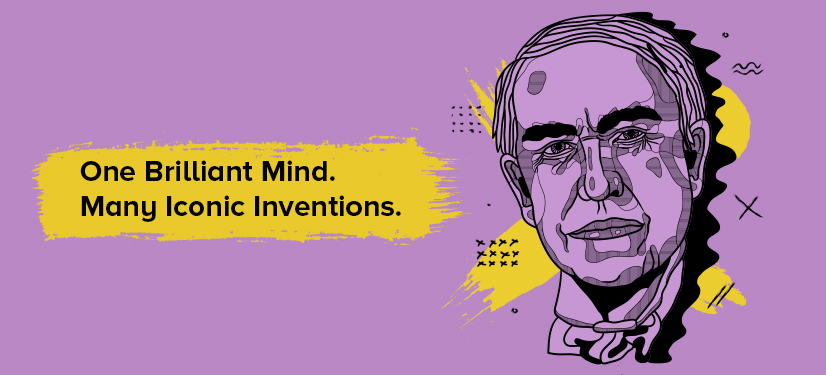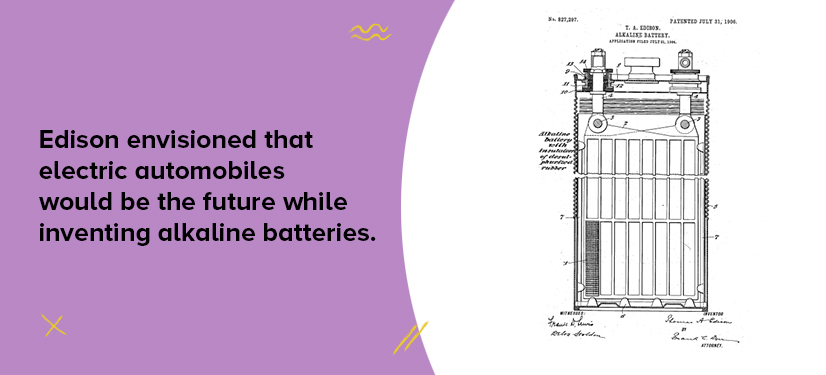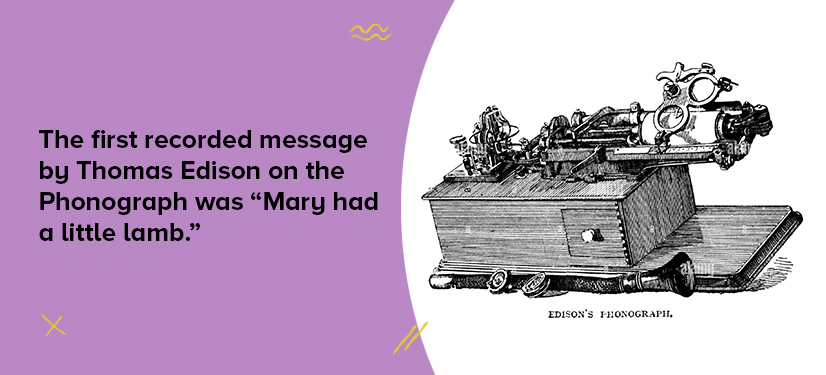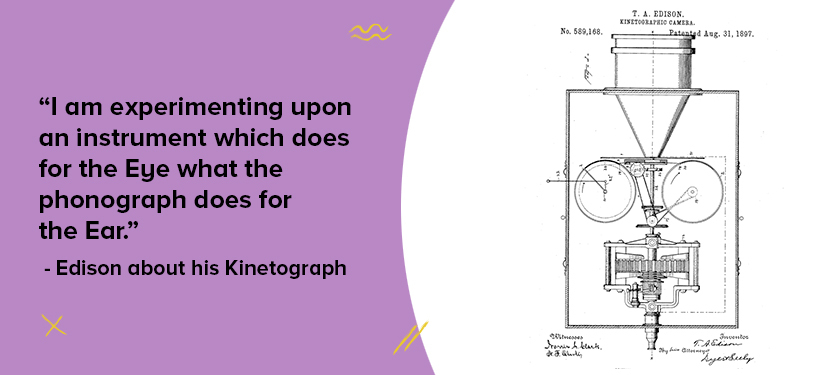
“Genius is one percent inspiration and ninety-nine percent perspiration.” — Thomas Edison, American inventor and businessman.
Edison was not born a genius. In fact, when he went to school, his teacher complained that he was “backward” and “asked too many questions”. His mother pulled him out of school and taught him reading, writing, and arithmetic herself. She encouraged him to read, as much as he could, and he did exactly that.
Edison’s curious nature allowed him to teach himself by reading on his own. As a young boy, he was fascinated by science and technology, and spent hours experimenting in his home. Although he suffered a loss of hearing, and was often deemed a misfit, he claimed that his disability helped him ignore distractions and concentrate better. Edison’s determination and curiosity remained within him and he never stopped learning throughout his life.

Image via Wikipedia
Edison was a very enterprising person. He did not study to become a scientist or an engineer. Instead, he set out to become an inventor out of curiosity. He began his career at the early age of ten by selling newspapers and candy on the local railroad. By the time he was sixteen, he had learnt how to operate the telegraph and became a wandering telegrapher.
However, he never stopped conducting experiments on the side. During this period, he slowly transitioned into being an inventor. In fact, one of his first innovations was creating a device that could inscribe the telegraph’s morse code as a series of dots and dashes on a strip of paper. He attempted to make the telegraph more accessible to people like him, so that the messages could be decoded and read, instead of only being listened to.

Image via Forbes.com
In his 84 years of life, Edison held a record number of 1093 patents in the US, and he had filed for hundreds more. Today, he is remembered for developing the light bulb. Although he was not its inventor, he made it commercially viable and sustainable for the first time. He even built an entire electric system that powered lightbulbs and fundamentally changed the way we live, transforming us into a 24-hour society.
Edison had many more inventions to his name apart from the incandescent light bulb. In fact, he established the first invention factory that employed thousands to work on his ideas. For his technological pursuits, he was popularly called the “Wizard of Menlo Park.”

via GIFY
Some of Edison’s inventions failed, simply because they were ahead of their time, or not commercially viable. And, others were a resounding success that shaped the future of the world. Most of his research was not to understand why something behaved the way it did, but to understand how to make it better. He applied this principle to all his work and never stopped improving and innovating.

The Electrographic Vote Recorder [Image via Weebly]
Edison was inspired to build this device after he heard that the New York state legislature and the city council of Washington, D.C., were investigating ways to automate the ballot process. At the time, legislators would call out “Yea” or “Nay” and a clerk would jot down their responses.
Edison’s machine had a system of a simple switch and an electric current. When a legislator flipped a switch to indicate their “Yes” or “No” vote, the machine would transmit the signal through an electric current and mark their name in the corresponding column. It also kept a track of the total tally of votes on a dial. Once the voting was over, a sheet of chemically treated paper would be placed on top of the columns and pressed down with a metallic roller, thus imprinting the paper with the results.

Although Edison received his first patent, unfortunately, his invention was never used, because the members of Congress were uninterested in it. However, this system inspired the modern automated voting system of today. At the time, Edison vowed to never invent something again that wasn’t commercially viable. Unlike the Electrographic Vote Recorder, his later inventions would make a significant mark on the technological landscape.

The Edison Electric Pen [Image via IEEE Spectrum]
Edison’s Electric Pen was invented as a means to produce copies of his own correspondence and notes. He built a small electric motor that operated a tiny needle to run up and down in rapid motion. It produced a series of small holes as the user writes on a specially treated paper to create a stencil. Then, a roller was used to press ink through the holes to produce duplicates of the original document. It could make 50 punctures per second, or 3000 per minute.

Edison’s Electric Pen is considered the first electric motor-driven appliance. It proved ultimately unsuccessful because a host of mechanical pens came into the market that did not need a motor. However, this invention led to the development of the Edison Mimeograph by A. B. Dick in the mid-1800s. The Electric Pen had a second life in the 1890s when Samuel O’Reilly converted it into the first electric tattoo needle.

Thomas Edison with his nickel-iron cell [Image via Wikipedia]
Thomas Edison was an automobile enthusiast and also a good friend of Henry Ford. They had worked out a deal to make improvements to the conventional lead-acid batteries that were used to power Ford’s electric cars. Edison’s new battery contained potassium hydroxide as an electrolyte, along with iron and nickel electrodes, which he claimed as dependable as well as rechargeable. This prototype had a few kinks to work out, especially because it would release hydrogen when it was being charged.

By the time he had a more refined prototype, the market had new fossil fuel-powered vehicles that drove for longer distances without needing a recharge, rendering electric vehicles less convenient. However, hundred years later today, Edison’s invention is now being investigated as a source of renewable energy.
The Invention of the Phonograph

Thomas Edison in his lab after working long hours on his phonograph. [Image via nytimes]
This was Edison’s favourite invention, and the one that attracted great fame to his name. Edison’s vision was for sound to be captured on a device and then played back. He discovered a means to record sound vibrations on tinfoil-coated cylinders. When he spoke into a recorder, a vibrating stylus would emboss indentations on the tinfoil paper. He then set a needle on the grooves, and played back the sound. He had finally created a machine that could “talk back”, and called it the Phonograph.

The world had never seen such an invention before, and people clamoured to listen to it. Edison suggested that the machine could be used for dictating letters, to record family memoirs, or create phonographic books for the visually impaired. What he did not expect was the effect the machine had on the music industry. Soon people were able to listen to famous voices and melodies in music parlours instead of only in concerts. The invention inspired future innovations such as the gramophone and cassettes. The world today would barely be the same without Edison’s Phonograph.

The Kinetograph [Image via britannica.com]
Ten years after the invention of the Phonograph, Thomas Edison became interested in creating a technology that could combine moving pictures and sound. Before Edison, Eadweard Muybridge was a photographer who had pioneered a process in which a series of pictures could be taken of a subject and then played back in a sequence, as if it were in motion. Edison approached Muybridge to add sound to his moving pictures, but was rejected.

He decided to build his own technology of a moving camera. The concept of his Kinetograph was to employ a cylinder similar to those used in the phonograph, place it inside a camera and then coat it with a light-sensitive material. Every time a picture was taken, the cylinder rotated slightly, taking another picture. The crude film was then processed and run through a viewer in slow motion.
In order to view the films, Edison’s team invented the kinetoscope, which was a peephole viewing cabinet. He then combined the Phonograph and the Kinetoscope to play the picture and the sound in harmony, providing the first movie-like viewing experience. One of the first films Edison made was of a laboratory worker, named Fred Ott, who acted out a sneeze on February 2, 1893.
The pioneering advances of Thomas Edison and his crew paved the foundation for all the technological developments in the motion picture industry that came after.

A Kinetoscope Parlour [Image via Wikimedia]
Thomas Edison gave us some of the greatest inventions of all time. The trendsetter that he was, he even popularised the use of the word “hello”. This is one of the reasons why we say hello on phone when answering a call. He was an entrepreneur whose ideas were so futuristic that he had created a new kind of intellectual pursuit of “Innovation-Invention”. His commendable curiosity and perseverance helped him overcome failures and continue innovating for a more advanced society. If Thomas Edison were alive today, he would certainly not recognise the world now that has rapidly developed thanks to his technology and vision.
. . .
Were you inspired by Thomas Edison’s story? What lessons did you gather from it? Tell us in the comments below. Also, comment on which innovator you would like to read about next.
Also, read more such stories of innovators:
Vandya is a copywriter by the day and an amateur illustrator by the night. She's a cat mom 24/7. As a certified organisation freak, she lives and breathes in Notion. With a head full of ideas, she is passionate about crafting interesting concepts - for work or play. To kick back at the end of the day, she likes binge-watching shows with an inclination for all things spooky.
Comments
Hema
April 5, 2022
Hi Vandya Rai,
My wish and prayers are for you..I want to request you to write on people of Indian origin. Its our rich heritage stolen and got patented/published or made famous in some cases.
Thank you.
Aaditya yadav
March 13, 2022
Great story
nidhi s nair
February 28, 2022
superb story.
thank u byjus for inventing new things
V.krishna priya
February 27, 2022
Great story
Sagar
February 21, 2022
great storys
Nilabh
February 17, 2022
Great insights, Thank you.
Rishi Gupta
February 16, 2022
??
Husen Bandeburuj
February 16, 2022
Best storys